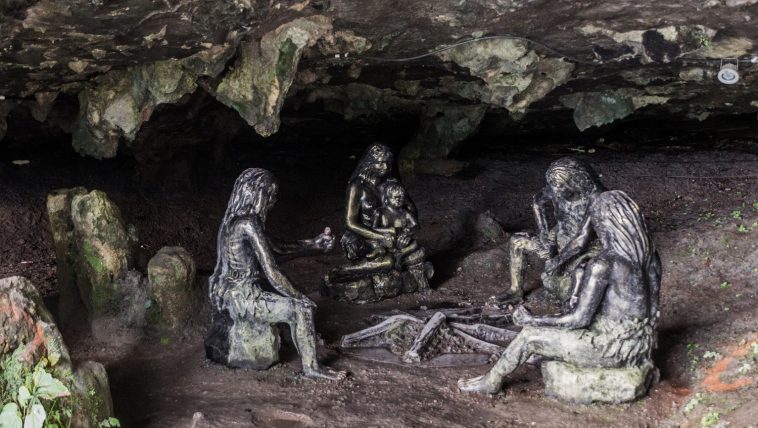[Originally published as the second part of 5 Reasons Why Neanderthals Were Simply Humans. See part 1 HERE]
The Question of DNA
As creationists, there are some undeniable facts of biology that we ought not to fear but rather embrace in an effort to form a holistic model of human origins. By definition, any such model must be able to account for all of the data we have presently available.
Therefore, if new data is discovered which happens to falsify a previously held model, it must be reworked. This is not a problem, per se—it’s simply how science is done! Critics of Christianity often point out that creation science is pseudoscientific because it fits data to a predetermined conclusion.
But this indictment is a category error.
The Bible is a book that makes claims about history. We don’t have to perform historical science to understand history. It doesn’t take a forensic scientist, for example, to uncover details about the existence of George Washington. It is our historical documentation that has given us such information.
Similarly, the Bible has recorded for us an accurate history of the world.
Creation scientists are simply using such information to process the scientific data. By the way—lest one think this is not what happens in evolutionary biology, consider the simple fact that Darwin published Origin around 100 years before the field of genetics that could begin to answer the questions posed by Darwin even existed.
Ideas about the age of the earth and the evolutionary history of humanity predated Darwin by centuries, and it is no secret among experts in the field that two overarching paradigms — uniformitarianism and philosophical naturalism — undergird all aspects of their forensic science. In this respect, creation scientists and mainstream scientists do the same thing in principle — just with different assumptions.
So, how does Neanderthal DNA fit into all of this?
In multiple ways. In fact, in so many ways that we do not have the space to explore them in this article. I simply want to make a general point about this that may seem basic at first but will fundamentally affect how we incorporate this data into the creation model.
Neanderthal DNA is not identical to modern human DNA, yet modern people have Neanderthal DNA in their genomes.
One creationist biologist—Dr. Todd Wood—has had himself genotyped and was found to have Neanderthal DNA. Specifically, DNA that was associated with having less back hair. (Lucky for him!)
What does this mean? Does it mean that Neanderthals are not human because their DNA is recognizable and unique? Well, again, this is a question that depends on your assumptions. And the answer will depend on what kind of “evidence” you accept in your evaluation.
There is more to you than your DNA. DNA is important — of that, there’s no question. But it cannot answer every question by itself. There are more factors to be considered. Neanderthals can’t simply be some distant relative of humans because we already know when they lived. If my understanding of the Bible is correct (and I strongly believe it is), then it must have been within the last 6,000 years or so.
In light of that, here’s the question we should ask:
Is there any evidence that Neanderthals were simply humans?
One such helpful form of evidence is of a behavioral nature. Humans are, no doubt, unique in many ways. Here are just five (of many) lines of evidence suggesting that Neanderthals are simply human beings:
1. Evidence of Burial Practices
The first uniquely human trait possessed by Neanderthals is that of burial rituals. Many of these examples are cave burials. It’s interesting that, when first learning about human evolution, students are often taught that “ancient” men were simply primitive brutes — cavemen, as it were.
In reality, the Bible informed us of this long ago! The Bible mentions cave dwellers very soon after the flood and tower of Babel events. This makes sense since, after the dispersal of people and the confusion of languages, it would be a long time before the skills and communication developed to begin rebuilding cities. These post-Babel people groups would need somewhere to find shelter, and the Bible tells us they sometimes sought shelter in caves.
We find Lot and his two daughters living in a cave (Genesis 19:30). Abraham buried his beloved wife, Sarah, in a cave (Genesis 23:19). Fleeing from Joshua and the Israelite army, five kings hid in a cave (Joseph 10:16). Even King David hid in caves (1 Samuel 22:1, 24:3, etc). The point is, in Old Testament days, this was common. All of this happened long after Noah had the intelligence to build the ark.
An obvious conclusion we can draw from this is that one does not need to be technologically bereft in order to be found dwelling in caves. There is no connection between non-human “brute” behavior and cave-dwelling. Such ideas are an imaginary conception—the product of museum artistry.
On the burial practices of Neanderthals, Lubenow writes:
Approximately 500 Neanderthal fossil individuals have been discovered so far at about 124 sites in Europe, the Near East, and western Asia. This number includes those European archaic Homo sapiens fossils that are now called Neanderthal or pre-Neanderthal. Of these 500 Neanderthal individuals, at least 258 of them represent burials — all of them burials in caves or rock shelters. Further, it is obvious that caves were used as family burial grounds or cemeteries, as numerous sites show. The reason we have so many Neanderthal fossils is because they did bury their dead. The bodies were thus protected from carnivore activity. Most anthropologists recognize burial as a very human and a very religious act.¹
In further support of this notion, there is overwhelming evidence that “modern” humans and Neanderthals are buried together—part of the same family!
Lubenow is helpful in his assessment of this as well:
Skhul Cave, Mount Carmel, Israel, is considered to be a burial site of anatomically modern Homo sapiens individuals. Yet, Skhul IV and Skhul IX fossil skulls are closer to the Neanderthal configuration than they are to modern humans. Qafzeh, Galilee, Israel, is also considered to be an anatomically modern burial site. However, Qafzeh skull 6 is clearly Neanderthal in its morphology. Tabun Cave, Mount Carmel, Israel, is one of the classic Neanderthal burial sites. But the Tabun C2 mandible is more closely aligned with modern mandibles found elsewhere. The Krapina Rock Shelter, Croatia, is one of the most studied Neanderthal burial sites. At least 75 individuals are buried there. The remains are fragmentary, making diagnosis difficult. However, the addition of several newly identified fragments to the Krapina A skull (now known as Krapina 1) reveals it to be much more modern than was previously thought, indicating that it is intermediate in morphology between Neanderthals and modern humans.
All of this evidence works together to suggest that Neanderthals and modern humans lived together, worked together, and were even part of the same family.
We’ve already mentioned the biblical cave-burial practices. The symmetry between this and what we observe in neanderthal behavior is astounding! In fact, it is pretty much identical.
Of course, none of this is surprising in the young-age creationist view. This is because biblical categories are dramatically different from the taxonomical categories used by evolutionists. The Bible uses the term “kind” (min, in the Hebrew) when it speaks to the categorization of humans, animals, etc.
Therefore, we submit that Neanderthals were a part of the human kind. While there may be genetic and anatomical differences, there is no contradiction here whatsoever. There is plenty of room for variation based on myriad factors (ecological, food consumption, family lineage, etc), and so the contemporaneous existence (and even burial) of Neanderthals and modern humans is perfectly welcome.
To be continued…
Reference
- From Bones of Contention, Marvin Lubenow, Baker Book Publishers, 1992. You can purchase an updated book on the same subject at the Creation Superstore: Contested Bones by John Sanford and Christopher Rupe







